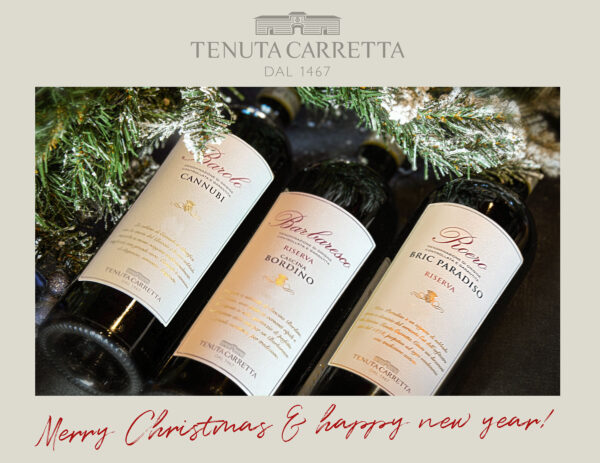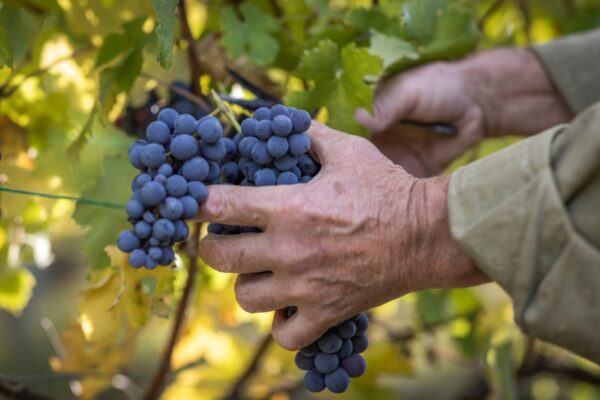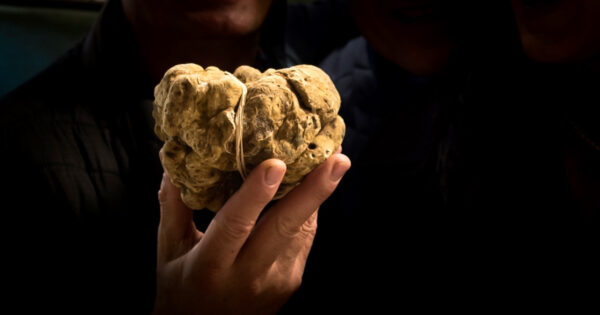• Winery
Technical director Roberto Giacone reveals the “secrets” behind our Roero Arneis Cayega
Reading time in

Not every Arneis cluster gets to become Cayega. Every grape that aspires to achieve the golden crown must complete the following journey…
The harvest is now over and the work in the cellar has already begun. So we asked Tenuta Carretta’s technical director Roberto Giacone to explain the process to us. Our goal is to have him share how Roero Arneis Cayega DOCG is born vintage after vintage. Morale is high: The harvest went very well this year and the grapes, even in the earliest phases of vinification, have delivered great results.

So Roberto, are you ready to reveal the secrets that go into making this delicious wine?
It may seem like something obvious to some but the story of Cayega starts in our hills. The wine is made exclusively from grapes grown on our estate-owned vineyards. Arneis is a very delicate grape variety and it needs a lot of attention and care. We follow its ripening all the way up until picking, which is carried out completely by hand. Having the vineyards so close the winery is a really important element for those who aspire to make high-quality wines because it allows us to reduce the amount of time the grapes spend in their crates after being picked and that helps to preserve their freshness.
What happens after the grapes arrive at the cellar?
The grapes are weighed and then they undergo visual evaluation to determine how healthy they are. Then we do two laboratory analyses of the fruit. We determine the levels of sugar and acidity. After that, the cycle of vinification begins: The grapes are placed in the press as whole as possible and then they undergo a very soft pressing with a maximum of 1.2 bars. Traditionally, Arneis is vinified in reduction and this means that they are saturated. All of the components that come into contact with the must are filled to capacity. That includes the press and the tanks for the must and the racking of the must. The goal is to avoid any possible risk of oxidation.
So after the grapes become must, then what happens?
Once we have obtained the must, then we add enzymes to carry out the first clarification. The temperature is lowered to about 15° C. so that we can stop the juice from fermenting spontaneously by means of its ambient yeasts, in other words, the yeasts that are present on the skins of the grapes. That’s what turns the sugar into alcohol. After 12-14 hours, the clear and the cloudy will separate. Then select yeasts are inoculated and over the course of about 24 hours, healthy fermentation will begin under controlled conditions. The presence of the yeasts serves a fundamental purpose: They have strong antioxidant properties and they allow us to use minimal amounts of sulfur during vinification. And that reduces the total amount of sulfur we will use in the wine.

How long does fermentation last?
Sometimes fermentation can last up to 25-30 days. The duration depends on the composition of the must, like the level of sugars, for example. The more sugar in the must, the more time it will take for the fermentation to transform it into alcohol. This year, for example, the healthy character of the grapes prolonged the fermentation time to 27-28 days. We do our fermentation at a slow pace on purpose, at relatively low temperatures, around 16-18° C. In doing so, we manage to extract elegant, refined aromas from the must.
What happens with the fermented must?
The temperature is then dropped to around 5-6° C. so as to stop the second fermentation: Malolactic fermentation. The second fermentation turns the grapes’ naturally occurring malic acid into lactic acid. We stop it in our white wines because we prefer to keep the acidity in the wine along with the herbaceous notes that we would lose if we don’t preserve the malic acid. The solids are then removed from the wine and we obtain a wine that is still cloudy due to the presence of yeasts suspended in it. As we age the wine, the sediment will separate from the liquid. And this is when we begin the aging in stainless-steel tanks.
What does that consist of?
The wine is kept at a low temperature and at least twice a month, we stir it to keep the yeasts suspended in the liquid. That’s what allows their cellular walls to impart the so-called “noble” substances to the wine. This process will continue for 4-5 months. And following that, we begin to prepare the wine. Before bottling, the wine is clarified and filtered. And that’s how Cayega is born.

One last question, Roberto: What are you thoughts on the 2016 Cayega?
The 2016 vintage will be remembered for its great depth. The weather conditions were excellent and they really helped us in our work in the vineyards and in the cellar. The healthy ripening of the grapes and the high levels of sugar produced impressive alcohol levels. What’s more is that the harvest began the first week of September and that will deliver good acidity in the glass. The complexity of Cayega is owed to the high-quality fruit that we start out with. And that’s the secret of our Roero Arneis and the secret to Tenuta Carretta: Having grapes that are grown over roughly 22 hectares of vineyards with excellent exposure and altitude. The parcels with the best exposure to the sun impart structure and good alcohol levels; the parcels at the bottom of the hills impart freshness and aromatic character.


